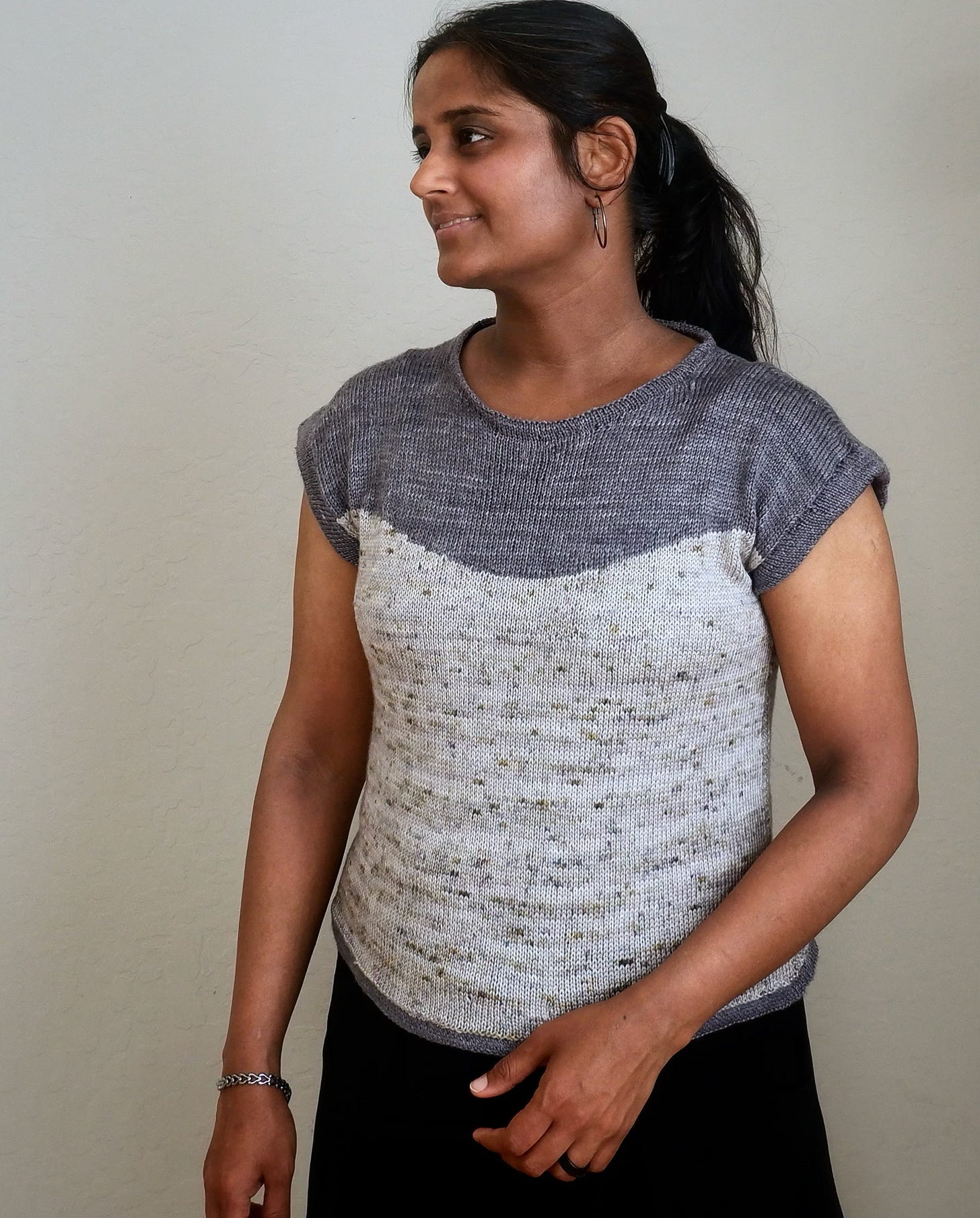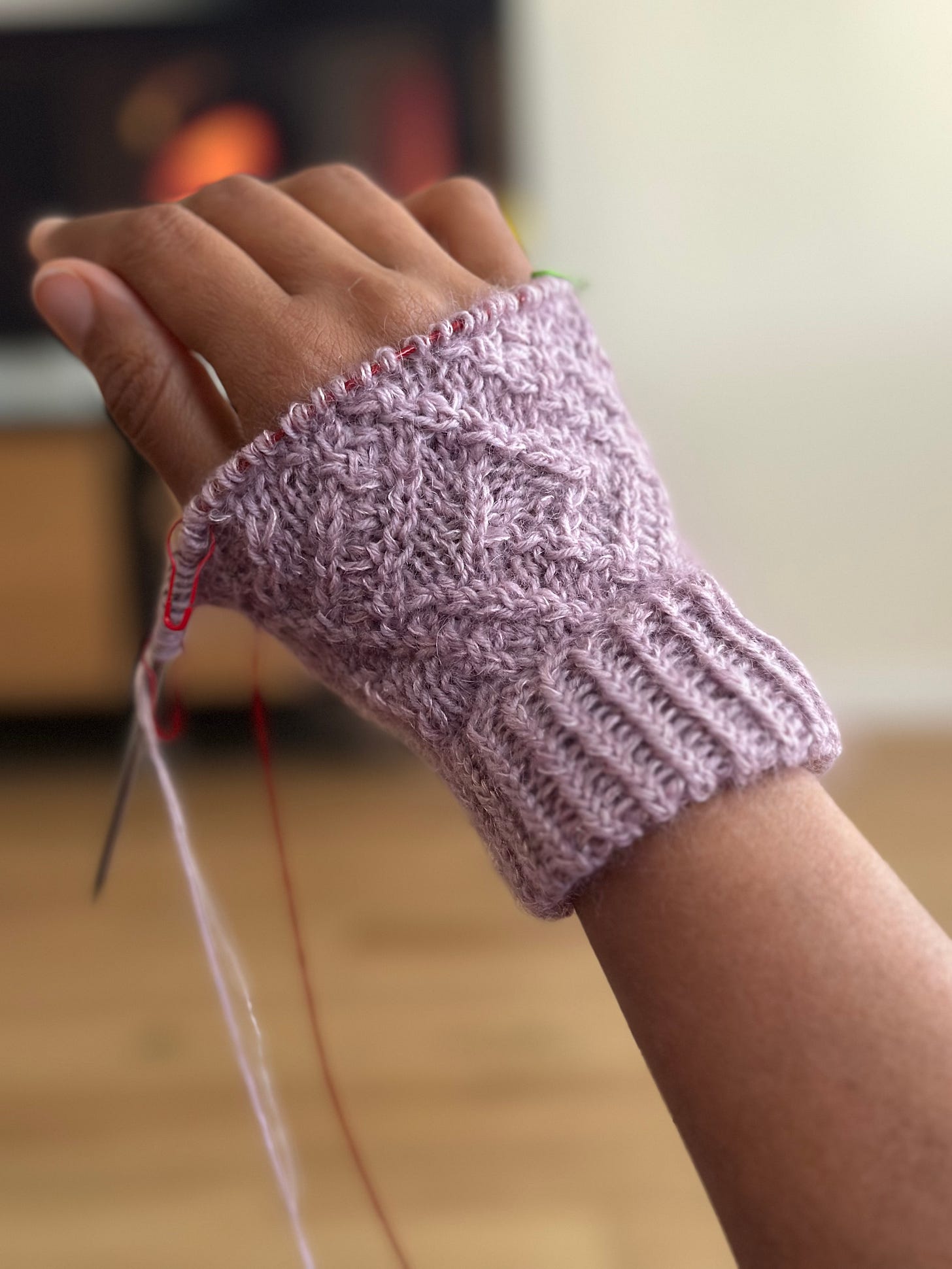The science and art of knitting
Exploring the craft from different angles, Pattern Testing calls, other updates etc.
Knitting is both science and art. 💗 Whichever way you choose to approach it, the craft always offers something to enjoy, learn, admire, and lose yourself in
As experienced knitters, we are familiar with many "rules" of knitting:
Go down a needle size or two for ribbing.
Bind off loosely.
Tiny needles and thin yarn work best for socks. 🧦
And so on. We don't deliberate on these things as we go about a project, but there is a deep, empirical knowledge passed down through generations of knitters embedded in various aspects of the craft. We get to create and enjoy, building upon that wisdom.
SCIENTIFIC ANALYSIS
When we take time to analyze things scientifically and understand the properties of fiber and the mechanics of knitting, it opens up a myriad of possibilities.
Knitted fabric, which is a result of periodic looping stitches made of yarn, is far more elastic and stretchy than the individual strand of yarn it is made from. The elastic behavior of knitted material can be controlled and altered by choosing the right stitch pattern.
Scientists 👩🏽🔬 believe that by understanding how these fabrics can be programmed and how they behave, knitting’s applications can expand into various fields beyond textiles.
ARTISTIC ADMIRATION
Even after gaining some understanding of the science and math behind knitting, I must admit that I often return to simply admiring the marvels of the craft.
Knowing about the insulating properties of mohair, due to air trapped in its semi-hollow core and between the smooth fibers, doesn't stop me from admiring the halo, running my fingers over it, or exclaiming how light it feels to wear. 🫨
Every time I hold a knitted sweater, I find it staggering to think that not too long ago, it was just a few very, very long strings. 🧶
Planning and creating a structured three-dimensional wearable item with all the desired properties from a single long string of fiber is an equally magical and scientific pursuit that I am not ready to let go of anytime soon. 💞
Your turn! Do share in the comments something you’ve learned or admired lately in your knitting. I’m all ears.💗
CRAFTDOODLING DESIGNS UPDATES
I’ve just posted a testing call for Fluens Tee in my Ravelry Group. https://www.ravelry.com/discuss/craftdoodling-designs/4325834/1-25
Please check the details and apply if you are interested. 🩷
Yes, I have also posted a testing call for Almas Fingering Mitts. 🙃 Thanks everyone who signed up already. 🤗
Sizes D & E are still open. Please check the testing call below for details.
https://www.ravelry.com/discuss/craftdoodling-designs/4325786/1-25
I am getting started with some new designs and classes. I’ll post about them as soon as I am able. 🤞
OTHER THINGS YOU MIGHT LIKE
Reading Updates
Just finished Reading 📖
The Marlow Murder Club - Robert Thorogood
Currently Reading 📖
The nightingale - Kristin Hannah
Until next time,
Kavitha. ♡
Currently, this newsletter is free to subscribe. If you like my work, please consider these other ways to support:
Click the ❤️ at the bottom of this post. If you are reading from your email inbox, this will open substack in web browser. Please allow it to open and make sure you see the red heart.
Share your thoughts in comments. I am here for the conversations. I hope you are too!
Introduce this newsletter to a friend!
Buy my patterns. I hope you find something you like.
I accept any of these with immense gratitude. Thank you!






I use the scientific method when trying something new in my knitting. I just finished a hat knit inside out with a background of purl and slip stitch knit ridges. Knitting it on the “knit” side, I had to figure out the decrease lines on the ridges so they would look right. Hypothesis, trial, theory confirmed! That’s a great feeling!
Knitting really is engineering, isn’t it? I was pretty much a mathophobe until started knitting, and working back the formulas and proportions and estimates and geometry ‘n all.